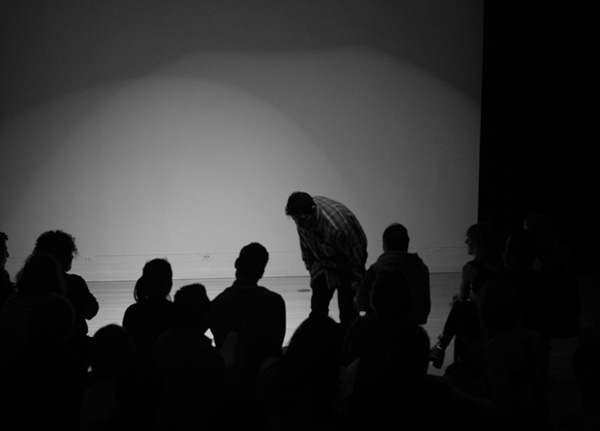
CONFRONTING A CERTAIN COWARDICE
first performed on
May 7, 2011
The School of The Art Institute, Chicago, IL
performed three times in 2011
ANTHONY ROMERO
Chicago, IL
229565942a229565942n229565942t229565942h229565942o229565942n229565942y229565942j229565942o229565942e229565942l229565942r229565942o229565942m229565942e229565942r229565942o229565942@229565942g229565942m229565942a229565942i229565942l229565942.229565942c229565942o229565942m
anthonyjoelromero@gmail.com
CONFRONTING A CERTAIN COWARDICE
ANTHONY ROMERO
I can tell you now that the dance piece “Confronting a Certain Cowardice” sits atop these questions: Where does the re-enactment begin? Where does it lie? Is it in the desire to re-stage, the steps to be followed, the breath to be breathed, the body to be enacted upon? Is it contingent upon the life of the so-called original? How does one begin again?
While I can tell you this now, at the time I began working on the piece I was unaware of these questions, and in fact it was only during the rehearsal process, when my body was in motion, that I came to understand what I was investigating. In this way choreography became not simply a means of organizing movement but an instrument through which I could capture or acquire that which I could sense but not readily identify.
When I began working on the piece I had a feeling that I wanted to use dance. Having been trained as an actor with very little physical knowledge of what it is for my body to move, to dance, I knew that I would have to begin by finding a precedent within theater. Here comes the importance of Jerzy Grotowski and Elizabeth LeCompte in helping me to identify this moment at which the conditions of theater are transformed through the performative into an arena in which the body consciously engages its surrounding architectures. I then began working with a trained dancer and again came to something new. I began to identify a familiarity in the movements. They were my movements but the images they created were not. No, these were images that I had experienced before, not directly but through their documentation. In 2008 Tania Bruguera staged “Tatlin’s Whisper #5” at the Tate Modern. In this performance two mounted police officers appear in the gallery unannounced to manipulate the audience through a series of “real-life” crowd control techniques. This was the performance I was unconsciously re-enacting, not so much the content of the work or Tania’s desire to enliven the gallery with a work of ambiguous force but the ways in which the horses moved, the ways in which they were being controlled and their roles as extensions of the officer’s bodies. Independent prosthetic limbs, these horses offered me an opportunity, through a choreographed re-enactment of their movements, to acquire something new.